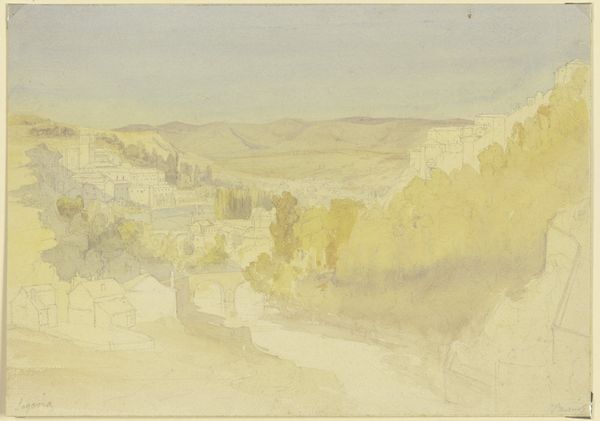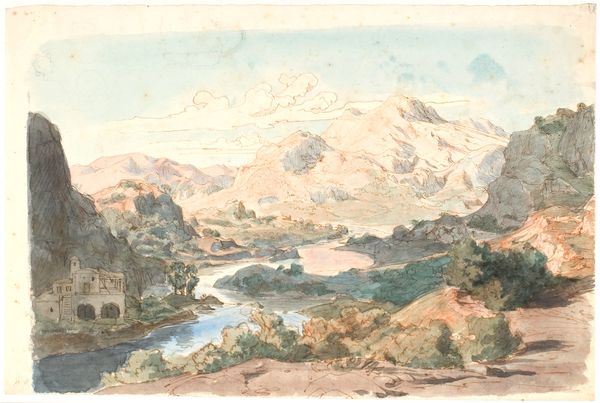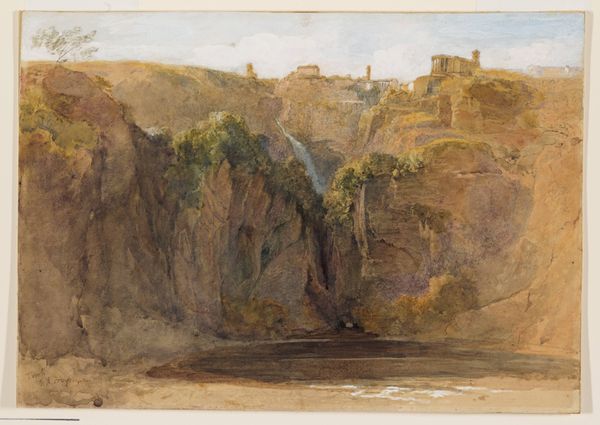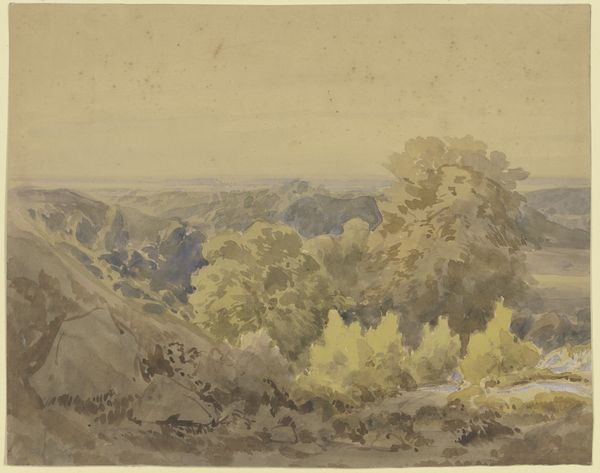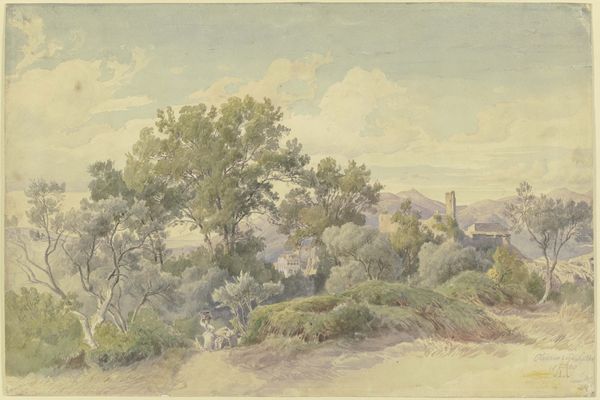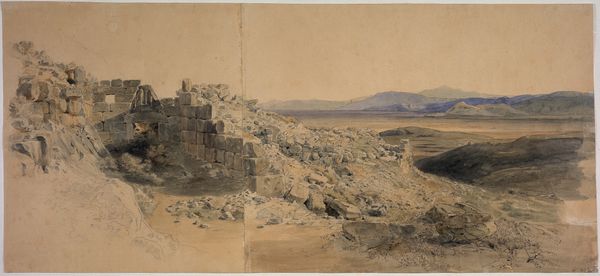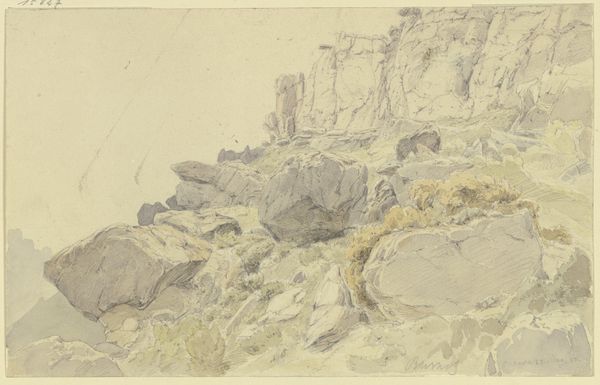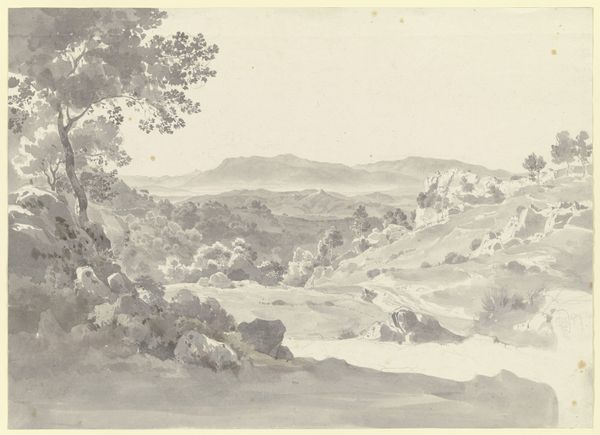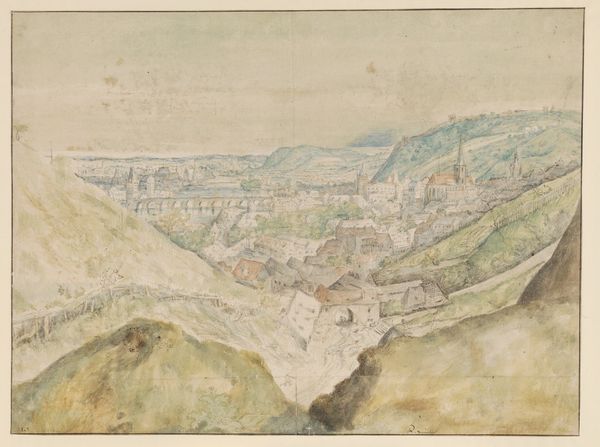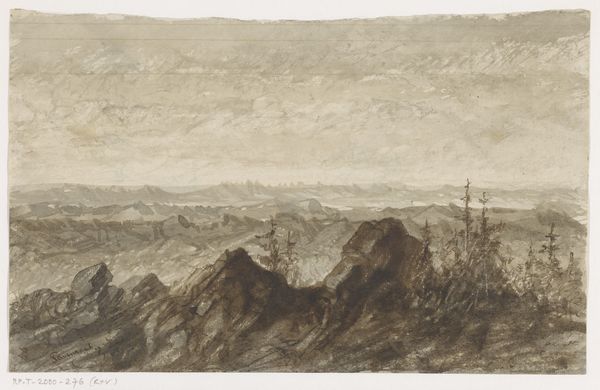
drawing, paper, watercolor
#
drawing
#
16_19th-century
#
landscape
#
charcoal drawing
#
paper
#
watercolor
#
romanticism
#
cityscape
#
watercolour illustration
#
watercolor
Copyright: Public Domain
Karl Peter Burnitz made this watercolor painting, called "Cuenca," sometime in the 19th century. The image depicts the Spanish city perched dramatically on rocky terrain. But what does this landscape tell us about the culture that produced it? Burnitz was a German artist, and the romantic style connects this image to a broader European fascination with the Iberian Peninsula. Spain, in the 1800s, was seen as a land of both exotic beauty and stark contrasts. Notice how the artist juxtaposes the wild, untamed nature of the mountains with the ordered architecture of the city. This reflects a common theme in Romanticism: the tension between civilization and the natural world. This tension was of great interest to intellectuals. To understand this work more fully, we might turn to travelogues, literature, and political writings of the period to find out more about European perspectives on Spain. Art, like this landscape, doesn't exist in a vacuum; it's always in conversation with the ideas and attitudes of its time.
Comments
No comments
Be the first to comment and join the conversation on the ultimate creative platform.
